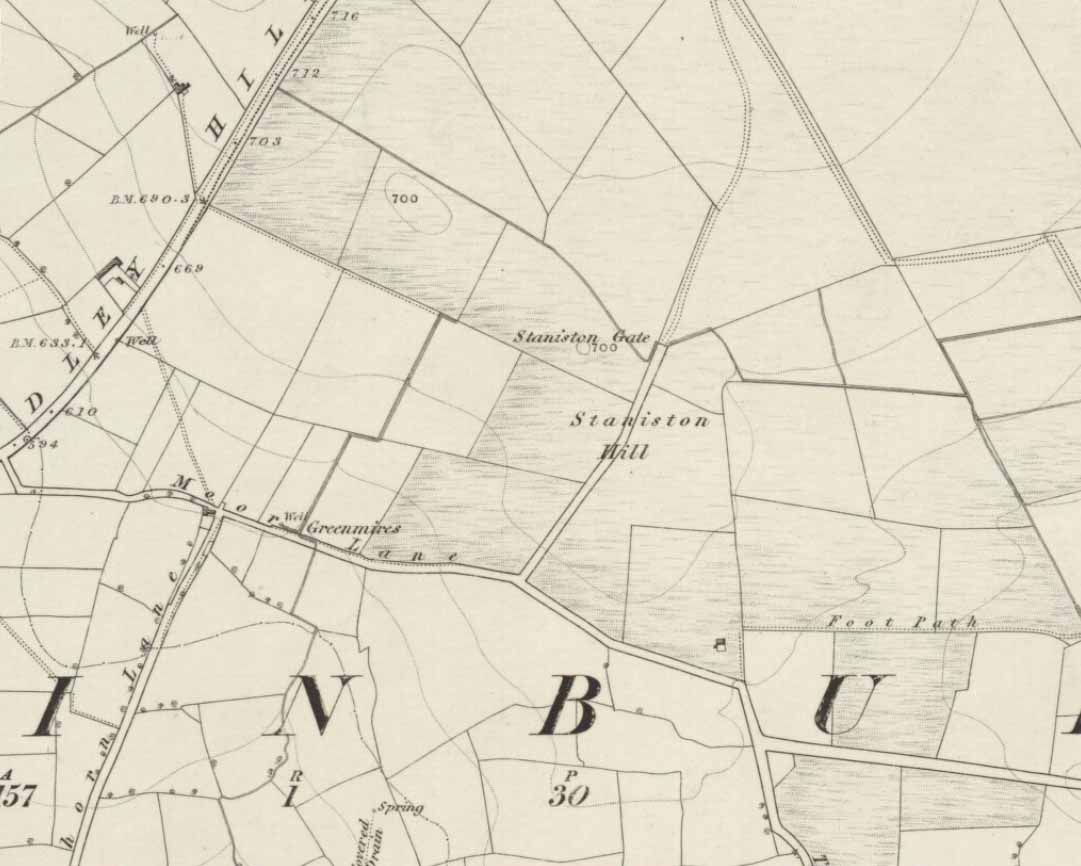Standing Stone (lost): OS Grid Reference – SE 2522 5010
Archaeology & History

This long-lost standing stone gave its name to the small hill between the geological giants of Little Almscliffe and Almscliffe Crags, ‘Staniston Hill.’ Described as early as the 13th century in the Cartulary of Fountains Abbey as ‘Standandestan’, its precise whereabouts is unknown—but it’s damn close to the grid-reference cited here. As the early OS-map shows, a small rounded hill occurs a short distance northwest of the small copse of trees now growing. The monolith may have been felled by some grumpy christian, or it could be standing in some nearby walling. Local antiquarians, dowsers or archaeologists may or may not find a search for it worthwhile…
Its position between the two Almscliffe Crags makes it very close to marking the midway point of a natural solstice marker: the Winter sunrise from Little Almscliffe and summer sunset from the greater Almscliffe.
References:
- Bennett, Paul, The Old Stones of Elmet, Capall Bann: Milverton 2001.
- Smith, A.H., The Place-Names of the West Riding of Yorkshire – volume 5, Cambridge University Press 1961.
© Paul Bennett, The Northern Antiquarian
Looking at the old maps website, the area has changed a bit over the last hundred years or so. All the way back to 1850 there’s no trace of the standing stone, but the local topography does narrow down where it could be. My best guess is to go to the north-west corner of the plantation there (that’s recent, only forty or so years old) and then go about twenty metres west by north-west and it ought to be around there somewhere.
If you go any more north-east of there, then there’s what looks from the maps to be a shallow valley, which on the old maps is always marked as boggy. It isn’t boggy any more, because in the fifties a lot of drains were put in, but it always used to be a bog and you don’t put a standing stone in an existing bog.
Where I think the stone should be (I’ve never been there exactly, but have cycled up the bridle path east of there, many, many years ago) there is what looks like a curious mound. It could be a tumulus, or it could be mining, or it could be agricultural. It isn’t marked on any maps, though.
Definitely worth going and having a womble round with dowsing rods. I might be able to spot the stone site, more likely the energy ley that it was sited on.
I wonder if it’s in the museum at Otley.